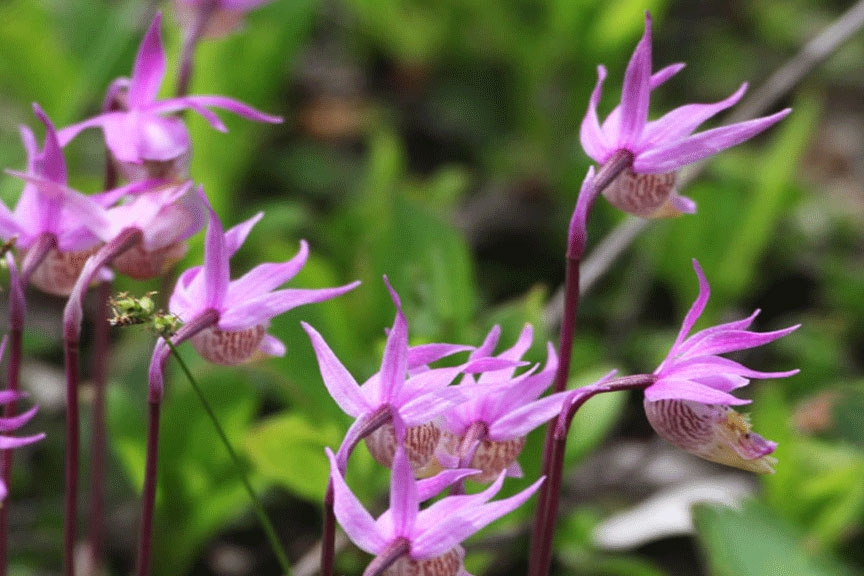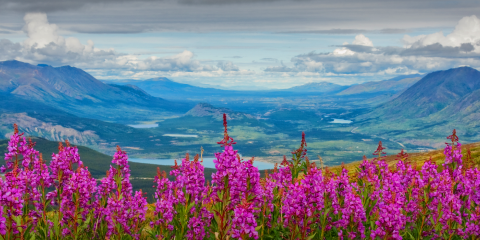
Spring has been late arriving this year, with our last snow fall only two nights ago. This has more or less all melted exposing straw coloured grass and bare earth. Over the last three days the day time temperatures have been around 7 degrees and the frenzied growth has begun. The ground is still frozen 6 – 8 inches under the surface, so the rotor-tilling of the vegetable garden will have to wait a while yet.
Mealy primroses are amongst the first plants to flower in spring, and I have watched for their emergence since the snow melted. The foliage is already a small rosette of tiny bright green leaves reminiscent of fresh lettuce. There are drifts of this plant making quite a show along the western facing side of our airstrip.
I often think that some of the prettiest flowers are the ones that are on the move and in flower within a few weeks of the snow melting. One of these is the Calypso Orchid. These orchids love shady woodlands, in moss under spruce trees. The solitary fragrant vanilla scented flowers nod delicately on 4 – 8 inch stems. I always take time to walk into the woods and admire their carpets, as the flowers are so fleeting. The plant swiftly produces its brown seed capsule immediately after flowering, containing between ten and twenty thousand seeds.
Historically, the flowers and roots of the orchid were chewed on for the relief of epilepsy, and were widely used in Chinese medicine. Current research is being conducted on the plant due to its ability to provide the drug Cypripedium. This drug is used as a nervine and antispasmodic.
The small white corms, which are the roots of the plant, were eaten raw by Aboriginal people. They enjoyed their buttery taste. These people quickly learned that the plants could only be eaten rarely as removing the corm, destroys the entire plant. In fact the plants are relatively short lived, and do not like being disturbed. In some areas they are rare due to human interference, but happily continue to spread in their undisturbed carpets under the spruce.


